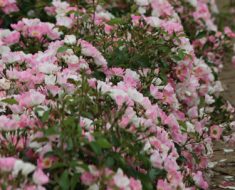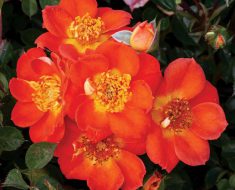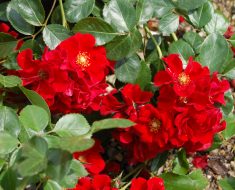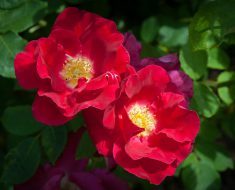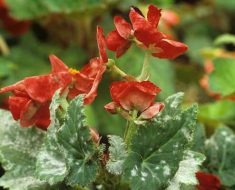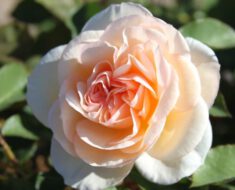As people and animals get sick, so do plants. In order to maintain plant health, it is necessary to find ways to combat plant diseases that can destroy large areas of green space. Many branches of science are involved in the creation of effective drugs for the control of ailments of ornamental and fruit plants. These are biochemistry, biotechnology, soil science, genetics, selection, meteorology, mycology, virology, chemistry, physics, statistics, etc. All of them contribute and help in the study of plant diseases. Combines all this knowledge with plant pathology.
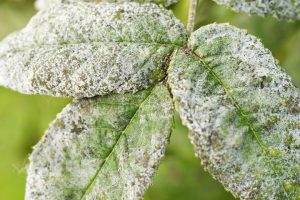
The most common diseases in plants are bacterial wilting, rust, spotting, various mold, root diseases, mosaics. This is only a fraction of more than 50,000 diseases affecting plants. They can be divided into annihilating, destructive, restrictive and debilitating. The first term implies complete death, the second – the disease weakens over time and there is an opportunity to restore the plant. Limiting diseases affect plant viability once, and exhausting diseases attack periodically and weaken crops over time. Diseases have scientific names and general, folk. The scientific name identifies the genus and type of disease.
Over the past 50 years, control methods have progressed through the use of modern methods of planting management, improving fertilizers, irrigation methods, and the use of chemistry. However, the use of pesticides, fungicides, herbicides, fertilizers or other chemicals for disease control should be reasonable and not affect the environment.
History of Plant Pathology
People have long known that diseases attack plants. It was only with the advent of the first microscope that they began to seriously understand the causes of these diseases. The Bible has links to diseases, pests, and mold. In 350 BC e. Aristotle wrote about plant diseases; a little later, Theophrastus tried to describe cereal and other plant diseases. In the Middle Ages, Europe felt the influence of fungal diseases and even Shakespeare mentioned powdery mildew in one of his plays.
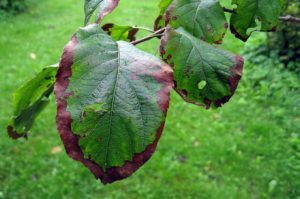
In 1683, A. von Levenguk built the first microscope and was able to see bacteria invisible to the human eye. In XII, D. de Monceau described fungal diseases and demonstrated how they can be transferred from one plant to another. But he was ignored. Around the same time, some English scientists described nematodes and by 1755 it became known how to process wheat seeds in order to avoid the appearance of diseases.
In the 19th century, the father of plant pathology, Henry A. de Bari, published a book in which he identified fungal infections as the cause of many plant diseases. Until that time, it was believed that diseases, including fungal ones, appear due to the decay of plants and are born spontaneously. He proved that the root of evil in the embryos of ailments. Until the end of the century, scientists of that period made many more important discoveries about specific diseases that attacked target cultures.

The first half of the 20th century was successful for V.M. Stanley, who received the Nobel Prize for his work on viral mosaics; he studied more deeply the nematodes and their effect on plants. In 1939, an electron microscope appeared that showed viruses to the world. In the 40s, fungicides were developed; in the 50s, nematicides. In the 60s, Japanese Yu. Doy discovered mycoplasmas, and in 1971 T.O. Diner discovered viroids, organisms less viruses ..
Causes of plant diseases Plant
diseases can be infectious and non-infectious. Noncommunicable diseases result from
- nutrient deficiencies in
- waterlogging and soil
- pollution, air pollution,
- excess moisture,
- lack of moisture,
- malnutrition,
- stress due to weather conditions,
- lack of light or its excess of
- strong winds,
- excessive use of herbicides.
Infectious diseases cause pathogenic, living microorganisms that infect plants and deprive them of useful substances. Bacteria, fungi, nematodes, mycoplasmas, viruses and viroids – organisms that provoke diseases. The largest are nematodes, the smallest are viruses and viroids. None of these pathogens are visible to the eye, but the effects of their activity are visible: wilting, yellowing, stunted growth, abnormal growth.
Bacteria
For example, some diseases in plants are caused by rod-shaped bacteria. They enter the plant through natural openings or wounds in the plant tissue. They can clog the sap flow system in the plant and as a result the plant weakens. Other common symptoms of a bacterial disease are rotting and swelling parts of the plant tissue. Bacteria are spread by water, insects, contaminated soil or tools. A bacterial burn attacks many plants. Crowned gall (provokes Rhizobium radiobacter) affects thousands of plants, including grapes, rosaceae, and walnuts.
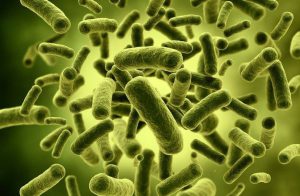
Fungus
About 80% of diseases in plants cause fungi. They have great ability to reproduce themselves. They can grow both on living culture and on dead plant tissue. Fungi can wait a very long time on favorable conditions. They penetrate into plant tissue or live on the surface of the plant. Fungus spores are spread by wind, water, soil, animals. Fungi growth is facilitated by warm, humid conditions. Many of them are useful in the formation of mycorrhizal compounds, and many cause diseases in plants. For example, anthracosis, black spotting, wilting, powdery mildew … Some of them are extremely dangerous for plants, and some are needed for normal growth.
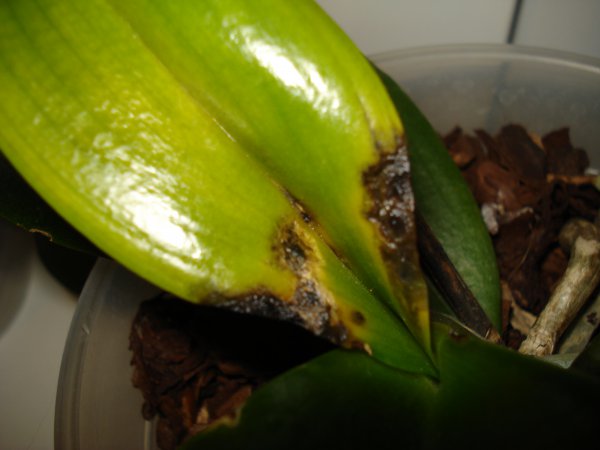
The list of harmful fungi is long. Some of them are only on specific plants, most of them are unsafe for many – both fruit and ornamental.
Viruses and viroids
Viruses and viroids are the most bad pathogens for plants. Sometimes the best way to deal with them is to completely destroy the plant. Chemicals have little effect on them (if only slightly tease them at all)). More than 300 plant viruses have been identified as major. But they constantly mutate. Symptoms of a viral infection in a plant may be wilting, yellowing, slow growth of some parts of the plant, malformations (torsion of leaves, narrowing of leaves). Mosaic viruses infect many plants. This is shown as leaf spotting or streak. As a result of their activities, for example, fruit crops produce poor fruits and poor crops.

Nematodes
Nematodes are tiny microscopic living things with worm-shaped bodies and long needle-like structures through which they suck out the juice from plants. They lay eggs, from which then larvae emerge, which go through four stages of development before becoming adults. In general, nematodes live 30 days, but in a sleeping state, their life cycle lasts up to 30 years or more. Nematides, chemicals against this pest, can help with the invasion of nematodes. Plant, for example, marigolds between plants – they are resistant to nematodes and cleanse the soil.
Malicious nematodes primarily destroy the root system, but also affect the rest of the plant. They thrive in warm, sandy, moist soil and attack various plants. Not all nematodes are “harmful”: some of them fight scoops, their caterpillars, and beetle larvae in the soil.
Other disease provocateurs inplants
- Mycoplasmaare single-celled organisms responsible for yellowing and are spread by insects.
- Parasitic plants (mistletoe, for example) select useful substances from the host plants that they have settled on. They weaken growth and, as a result, plant branches are deformed.
Causes of Disease
Imagine an equilateral triangle. The base is the host plant. Two equal sides – the environment and the pathogen. When the three factors combine, a disease occurs. Pathogens need plants as a development environment where they feed and grow. They cannot breed without them. In the right environment, the pathogen infects the plant and causes the disease. In order to actively destroy pathogens, it is necessary to replace them with those that are resistant to “infection” when planting, or immediately plant modified (hybrid) plants. That is, remove one of the sides of the triangle and thereby prevent diseases from appearing.
One of the factors that are not controlled by humans is the weather. When they contribute to the development of the pathogen and plants are susceptible to it, the disease occurs. A preliminary accurate weather forecast helps to warn about favorable conditions for the development of ailments in plants for both large agricultural enterprises and amateur gardeners. There are all kinds of sensors on the market for sale, which are placed in gardens or fields to monitor data on air temperature, soil, rainfall, lighting levels, wind direction and humidity. They significantly help in monitoring and provide information, and on its basis the measures that should be taken to reduce losses due to diseases are determined.
Disease
control Disease control begins with good soil management. Most plants prefer loamy soil with drainage and aeration. It minimizes the possibility of root diseases. In such a land, nutrients flow faster to the plant. It is better to fertilize such soil with organic matter. Soil pH should also be monitored, as proper balance also helps to reduce the susceptibility of plants to diseases, especially root ones.

clean tools
Disease control includes several more factors. The selection of resistant plants (varieties), proper watering, protection of plants from extreme weather conditions, rotation of crops, removal of infected ones, careful maintenance of working tools, use of high-quality seed material, healthy cuttings are the aspects that are important to pay attention to each time you plant. All methods help to avoid the appearance of a pathogen and plant disease.
It is very important every time when planting annuals to use replacing plants in places. This will not allow a certain plant and soil to accumulate pathogens in itself. This reduces the virulence of the infection and is a natural way to reduce the risk of contracting.
Enjoy your cultivation and successful struggle!


